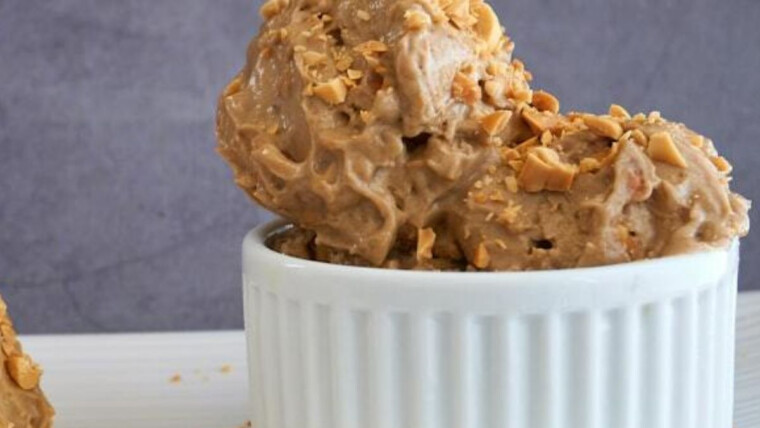Diabetes is a chronic condition that affects millions of people worldwide, with its prevalence steadily rising due to unhealthy diets, sedentary lifestyles, and genetic factors. Managing diabetes effectively often requires a combination of lifestyle changes, proper medication, and a healthy diet. One of the ways to support diabetes management is through incorporating certain fruits into the diet, and papaya is one such fruit known for its numerous health benefits, including its role in managing blood sugar levels.
In this blog post, we will delve into the numerous benefits of papaya for individuals with diabetes, how often it should be consumed, and when is the most beneficial time of day to eat it. Additionally, we will explore the nutritional profile of papaya, its impact on blood sugar control, and how it fits into a balanced diabetic diet.
Understanding Diabetes and Blood Sugar Control
Before discussing the role of papaya, it’s important to understand diabetes and its effect on blood sugar levels. Diabetes is characterized by high blood sugar levels resulting from either insufficient insulin production (Type 1 diabetes) or the body’s inability to properly use insulin (Type 2 diabetes). Blood sugar management is crucial for preventing long-term complications such as heart disease, kidney failure, nerve damage, and vision problems.
To manage blood sugar effectively, people with diabetes must pay attention to their diet, exercise regularly, and follow their prescribed medications. Foods that are low in glycemic index (GI) and rich in fiber, vitamins, and minerals can be beneficial for blood sugar regulation. Papaya, being a low-GI fruit with a variety of beneficial nutrients, is often recommended as a part of a diabetic-friendly diet.
The Nutritional Profile of Papaya
Papaya is a tropical fruit that is not only delicious but also packed with essential nutrients. Let’s take a look at its nutritional profile, which makes it an excellent choice for diabetes management:
- Low Glycemic Index: Papaya has a low glycemic index (GI) value of around 60, making it a suitable option for those with diabetes. The glycemic index measures how quickly a food causes blood sugar levels to rise. Foods with a low GI are absorbed slowly, leading to a more gradual increase in blood sugar.
- Rich in Vitamin C: Papaya is an excellent source of Vitamin C, an antioxidant that helps strengthen the immune system, reduce inflammation, and protect against oxidative stress. Vitamin C also supports the proper functioning of insulin, aiding in better blood sugar control.
- High in Fiber: The fruit is rich in dietary fiber, which slows down the digestion and absorption of sugar in the bloodstream. This can help prevent sharp spikes in blood glucose levels after meals.
- Contains Antioxidants: Papaya contains several antioxidants, including beta-carotene and flavonoids, which protect cells from damage caused by free radicals. This antioxidant effect is particularly beneficial for individuals with diabetes, as it helps reduce inflammation and oxidative stress associated with the condition.
- Low in Calories: With only about 60 calories per 100 grams, papaya is a low-calorie fruit that can be consumed in larger quantities without contributing to excessive weight gain, which is crucial for managing diabetes.
- Enzymes (Papain): Papaya contains the enzyme papain, which aids digestion and helps break down proteins. Better digestion can promote better nutrient absorption and overall gut health.
How Does Papaya Help with Diabetes?
- Regulates Blood Sugar Levels: As mentioned, papaya has a low glycemic index and high fiber content, both of which contribute to its blood sugar-regulating properties. Fiber slows down the absorption of glucose, preventing spikes in blood sugar levels after meals.
- Improves Insulin Sensitivity: Some studies suggest that papaya may improve insulin sensitivity, which is important for Type 2 diabetes. Insulin sensitivity refers to how well the body’s cells respond to insulin. Better insulin sensitivity means that the body can use insulin more effectively, helping to keep blood sugar levels within a normal range.
- Reduces Inflammation: Chronic inflammation is a common issue for individuals with diabetes, leading to insulin resistance and higher blood sugar levels. The antioxidants in papaya, particularly Vitamin C, beta-carotene, and flavonoids, help reduce inflammation and oxidative stress, making it a beneficial fruit for diabetes management.
- Supports Weight Management: Weight management is key in controlling diabetes, particularly Type 2 diabetes. Papaya is low in calories and high in water content, making it a filling and hydrating fruit that can aid in weight loss efforts without spiking blood sugar.
- Supports Heart Health: Diabetes increases the risk of heart disease, and consuming heart-healthy foods is essential. Papaya contains fiber, antioxidants, and vitamins that support cardiovascular health by lowering bad cholesterol levels and reducing inflammation in the arteries.
How Often Should Papaya Be Consumed for Diabetes?
While papaya is a nutritious and diabetes-friendly fruit, it’s important to consume it in moderation as part of a balanced diet. Here are some general guidelines on how often you should consume papaya:
- Daily Consumption: For the best results, consuming a small portion of papaya daily can offer consistent benefits. A serving size of about 1/2 to 1 cup (roughly 100-150 grams) of papaya per day is a reasonable amount that fits well into a diabetes-friendly diet.
- Morning or Afternoon Snack: Many people with diabetes prefer having papaya as a mid-morning or afternoon snack. This is because eating papaya in the morning or afternoon allows the body to process the fruit’s natural sugars and fiber more effectively. Pairing papaya with a source of protein, like nuts or seeds, can help balance blood sugar levels.
- Alternating with Other Fruits: While papaya is a great choice for managing diabetes, it’s also important to have variety in your diet. You can alternate papaya with other low-GI fruits, such as berries, apples, or pears, to provide a range of nutrients and antioxidants.
- Avoid Overconsumption: While papaya is a healthy fruit, overconsumption of any food, even fruits, can lead to an imbalance in blood sugar levels. It’s best to avoid large quantities of papaya in one sitting, especially if you’re trying to manage your blood sugar.
When Is the Most Beneficial Time of Day to Eat Papaya?
The timing of when you eat papaya can play a role in how effectively it impacts your blood sugar levels. Let’s explore the most beneficial times of day to eat papaya for those managing diabetes:
- Morning: Eating papaya in the morning can kick-start your metabolism and provide a steady source of energy throughout the day. Since it is high in fiber, papaya can help stabilize blood sugar levels after breakfast, preventing early-morning spikes. It can also aid digestion, which is helpful in the morning when your metabolism is more active.
- Before or After Exercise: If you exercise in the morning or afternoon, consuming papaya before or after a workout can be beneficial. The fruit’s natural sugars provide a quick energy boost, while the fiber and antioxidants help support recovery and reduce inflammation.
- As a Mid-Morning or Afternoon Snack: Having papaya as a snack between meals can help regulate blood sugar levels by preventing overeating during lunch or dinner. It provides hydration, fiber, and nutrients, and can curb hunger cravings without leading to blood sugar spikes.
- Avoid Eating Late at Night: It’s best to avoid eating papaya late at night, especially for people with diabetes. Late-night snacking, especially on fruits high in natural sugars, can disrupt sleep patterns and cause blood sugar fluctuations overnight.
Precautions and Considerations
- Consult a Healthcare Professional: Before making any significant dietary changes, it’s always advisable to consult with your healthcare provider or a nutritionist, especially if you have specific dietary restrictions or are on medication for diabetes.
- Watch for Allergies: Some individuals may be allergic to papaya or may experience mild digestive issues. If you experience any discomfort after eating papaya, it’s best to avoid it.
- Combine with a Balanced Diet: Papaya should be consumed as part of a well-rounded diet that includes a variety of fruits, vegetables, lean proteins, and whole grains. Focusing on an overall healthy eating plan is key to managing diabetes effectively.
Conclusion
Papaya is a versatile, nutritious fruit that can play a key role in managing diabetes. Its low glycemic index, high fiber content, and rich array of vitamins and antioxidants make it an excellent choice for those looking to regulate their blood sugar levels. Consuming papaya in moderation, ideally as part of a balanced diet, can provide numerous health benefits, from improved blood sugar control to better digestion and weight management.
For optimal benefits, it’s best to consume papaya daily in small portions, preferably in the morning or as a mid-day snack. However, it’s crucial to remember that diabetes management involves more than just adding a single food to your diet—regular physical activity, stress management, and proper medication are all essential components of a comprehensive approach.
By incorporating papaya into your diet thoughtfully and at the right times, you can enjoy its numerous health benefits while managing your diabetes more effectively.









Amish Rhubarb Jam Recipe
Homemade Fried Donuts Recipe
Authentic Chicken Mongolian Recipe
Sauteed Asparagus With Mushrooms Recipe
What are some examples of traditional foods that can be stuffed inside a loaf of bread?
Papaya for Diabetes: How Often Should It Be Consumed and When Is the Best Time of Day?
How do people rediscover old, forgotten recipes? Are they typically stumbled upon or found intentionally?
567 Mango Lassi Quotes To Fulfill Your Desires For Something Tropical